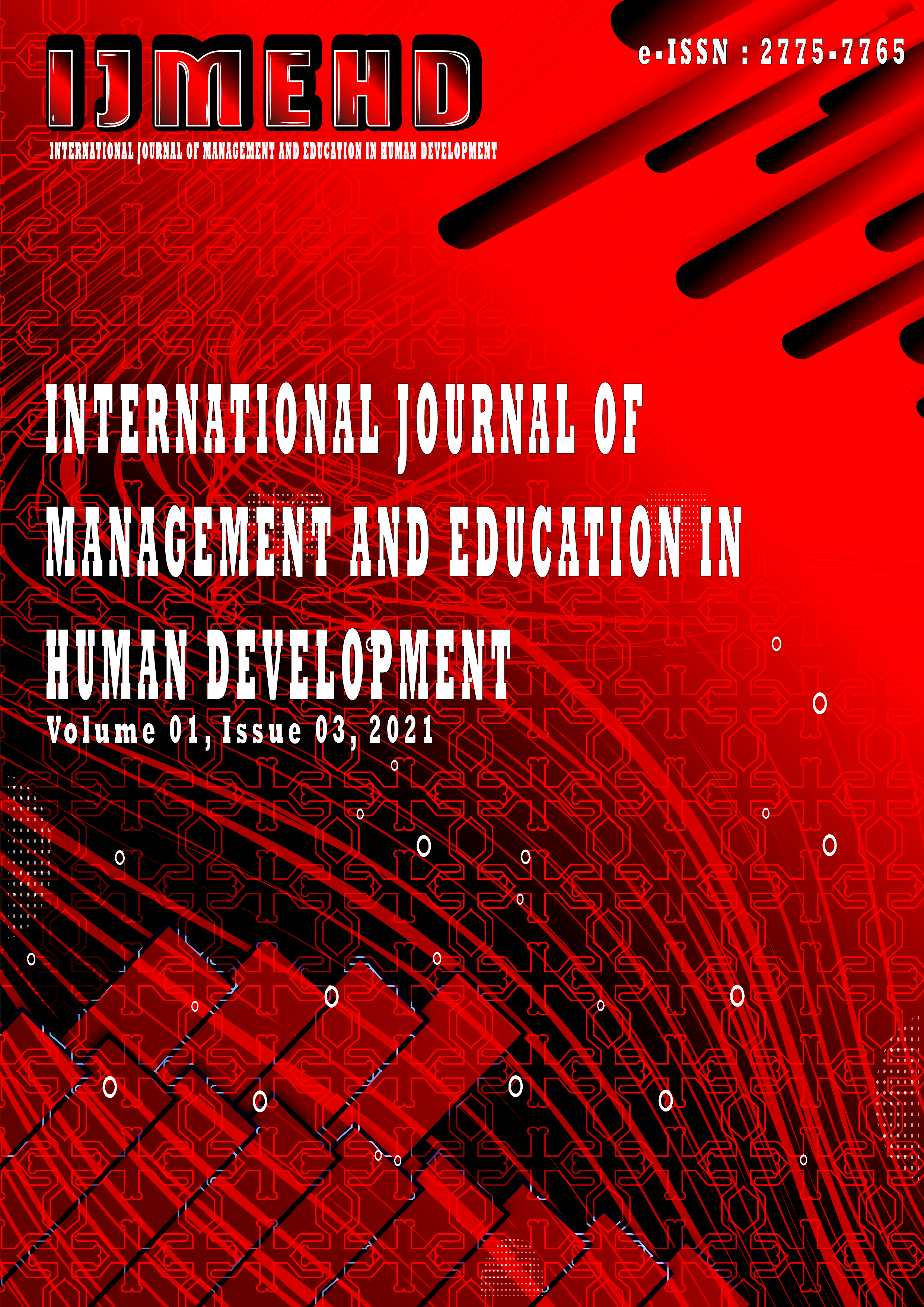Chinese Traditional Thoughts Applied to Management and Education in the COVID-19 Era
Keywords:
Chinese traditional thoughts, the COVID-19 pandemic, the theory of Yin and Yang, management principlesAbstract
We are wondering what is going on and what kind of world we will face after the COVID-19 pandemic. The COVID-19 pandemic has put large parts of the global economy on “pause”. The success of China in fighting with COVID-19 pandemic and the recovery of economy has been globally acknowledged. With long history and cultural heritage Chinese people integrate modern management principles with Chinese traditional thoughts to develop the unique approach to better monitoring and addressing management issues through the pandemic. The objective of the study aims to illustrate the framework and approach to effectively overcoming the difficulties of management and education in China during the COVID-19 pandemic. The primary method of this study is documentary research narrative (Marshall & Rossman, 2010) based on review of related literature in management. The conclusion of the study is suggested that the theory of Yin and Yang which teaches us that two opposing values and forces are related to each other in such a way of reconciliation that leads to harmony offers an effective principle of tradeoff for the relationship between management principles and Chinese traditional thoughts. Western management principles were supported by Chinese traditional thoughts as a response to create a unique managerial approach to dealing transparently and systemically with risk, uncertainty and irreversibility, such as the COVID-19 broke out. The traditional cultural values of the Chinese philosophers can drive the new perspective of management and education in the ASEAN for 21st century.
References
Atwater, P.M.H. (2005). Beyond the indigo children. Vermont: Bear & Company.
Beck, M. (2012). Finding your way in a wild new world. New York: Free Press.
Bennett, N. & Lemoine, G.J. (Jan.-Feb. 2014). What VUCA Really Means for You. Harvard Business Review.
Bloch, M. (1996). Methodologies Historique in Marc Bloch, The Historian and His Craft. Trans. Peter Putnam. NY:
Alfred A. Knopf, 1962
Bluestone, S. (1997). Signs of the times. New York: Berkley Publishing Group.
Braden, G. (2009). Fractal time: The secret of 2012 and a new world age. CA: Hay House, Inc.
Bruno Dyck, Mitchell J. Neubert (2010). Principle of Management. Australia: South-Western Cengage Learning
Carithers, B. & Grannis, P. (1995). Discovery at the Top Quark. Beamline.
https://www.slac.stanford.edu/pubs/beamline/25/3/25-3-carithers.pdf
Carroll, A.B. (1999). Corporate Social Responsibility: Evolution of a Definitional Construct
https://doi.org/10.1177/000765039903800303
Dyck, B.& Neubert, M.l. (2012). Management. Singapore: Cen age Learning Asia Pte. Ltd.
Confucian, (B.C. 480). Lun Yu. Beijing: China publishing house. ISBN 978-7-101-05278-7/K·2354
Deardorff, D.S. & Williams, G. (October 23, 2006) Synergy Leadership in Quantum Organizations. The Tritz Journal.
Dooley, M. (2009). Infinite possibilities: The art of living your dreams. USA: Atria/Beyond Words Publishing.
Dong, Zhongshu (1996). Luxuriant Gems of the Spring and Autumn. Ed. Su Xing. Beijing: Chinese Press.
Edwards, G. (1997). Stepping into the magic. Great Britain: MacKays Chatham European Business Network for
Corporate Social Responsibility (2017). China seriously tackles CSR in 2017.
https://www.csreurope.org/china-seriously-tackles-csr-2017#.W9mzFh8xTZ4
Fayol, H. (1916). General and industrial management. Paris: Dunod.
Greenwood, R., & Lawrence, T. B. (2005). The Iron Cage in the information age: The legacy and relevance of Max
Weber for organization studies. Organization Studies.
Godin, B. (2012). Social Innovation: Utopias of Innovation from 1830 to Present. Project on the Intellectual History
of Innovation, Working Paper No. 11. Montreal, Canada.
Greene, R. & Lawrence, T.B. (2018). The laws of human nature: The 48 laws of power. London: Viking.
Huangdi (B.C. 722-221). Su Wen Huang Di Nei Jing. Beijing Chinese Press
Hudtohan, E.T. (2021). Management in the 21st Century. A paper delivered at the Animo Webinar, De La Salle Araneta
University, Philippines on March 28, 2021.
Hutton, W. (2006). The writing on the wall: Why we must embrace China as a partner or face it as an enemy. New
York: Free Press.
Lao Tzu (B.C. 510) Tao Te Ching. Beijing: China publishing house. ISBN 978-7-101-05274-9/K·2350
Mahbubani, K. & Sng, J, (2017). The ASEAN miracle. Singapore: Ridge Books.
Mencius (B.C. 250). Mencius. Beijing: China publishing house. ISBN 978-7-101-08539-6
Morris, I. (2011). Why the west rules for now. London: Profile Books.
Moustakas, C. (1994). Phenomenology, Quantitative data collection, Phenomenological analysis. USA:
Sage Publications, Inc.
Nassan, G. (2018). Kindness: Changes your life and make the world a kinder place. United Kingdom of
Great Britain: Capstone.
Nemeth, M. (2007). Mastering life’s energies. California: New World Library.
Pallin, G. (2014). Storytelling – Getting the Message Across. Crf research, Corporate Research Forum.
www.crf.forum.co.uk.
Paner, M. (2017. Benita & Catalino Yap Foundation (BCYF) August 21-25 Philippine Social Responsibility
Week: Celebrating CSR 1.0, 2.0 and 3.0/. Toronto Times (n.d.).
Peng, K. and R.E. Nisbett (1999). Culture, Dialectics, and Reasoning about Contradiction. American Psychologist
Richardson, M.H. (2015). The quantum God: An investigation of the image of God from Quantum
Science. A masteral thesis. St. Mary’s University. Halifax. Nova Scotia
Sharma, J.K. & Singh, S.K. (2013). A Study on the Democratic Style of Leadership. International Journal of
Management & Information Technology. 3(2):54-57
Weber, M. (19 47). The Theory of Social and Economic Organization. New York: London: Free Press.
Zeng, Shen (B.C. 470-450). Da Xue. Beijing: China publishing house. ISBN 978-7-101-05276-3/K·2352
Zhuangzi (1983). Ed. by Chen Guying. Beijing: Chinese Press.
Downloads
Published
How to Cite
Issue
Section
License
Copyright (c) 2023 International Association of Management and Human Resource Development

This work is licensed under a Creative Commons Attribution 4.0 International License.

This work is licensed under a Creative Commons Attribution 4.0 International License.







